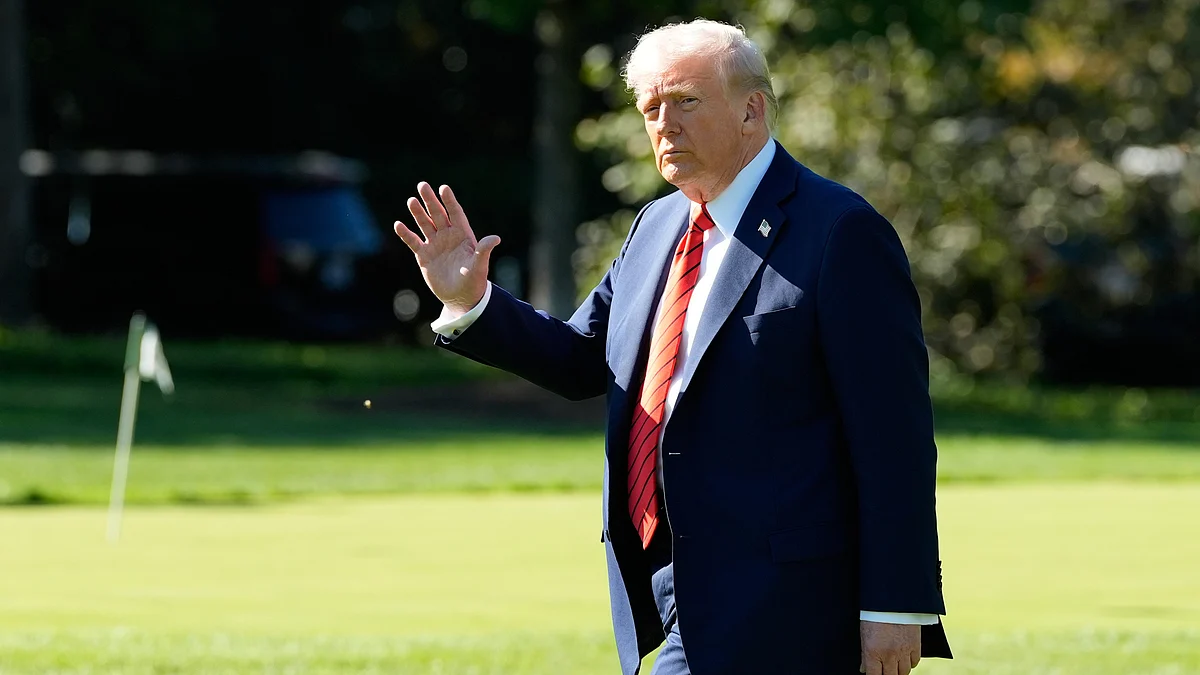Trump dons peacemaker cloak, flies off to Middle East to cement fragile truce
Trump will be in Israel and Egypt to secure Gaza ceasefire, release hostages, and push for lasting peace and regional stability

President Donald Trump embarked on a historic diplomatic mission to Israel and Egypt on 12 October as the United States aims to cement a fragile ceasefire and hostage agreement recently brokered between Israel and Hamas.
The visit seeks to capitalise on this delicate moment and encourage Middle Eastern allies to pursue a lasting peace in an otherwise volatile region.
The ceasefire agreement, still in its early stages of implementation, seeks to bring an end to the conflict that erupted after Hamas-led militants launched a devastating surprise attack on Israel on 7 October 2023. Trump believes this narrow window presents an opportunity to redefine relations in the Middle East and to mend ties long strained between Israel and Arab nations.
Trump contends that his administration’s support for Israel’s campaign against Iranian-aligned groups, including Hamas in Gaza and Hezbollah in Lebanon, has helped set the stage. The White House asserts that momentum is also accelerating, citing a renewed commitment from Arab and Muslim countries to resolving the longstanding Israeli-Palestinian dispute, alongside some nations bolstering ties with the United States.
“I think you are going to have tremendous success and Gaza is going to be rebuilt,” Trump said on Friday. “And you have some very wealthy countries, as you know, over there. It would take a small fraction of their wealth to do that. And I think they want to do it.”
A tenuous point in the agreement
The first phase involves releasing the last 48 hostages held by Hamas, around 20 of whom are believed to be alive; freeing hundreds of Palestinian prisoners held by Israel; delivering a surge of humanitarian aid to Gaza; and a partial Israeli military withdrawal from the main cities of Gaza.
Israeli forces completed their withdrawal from parts of Gaza on Friday, initiating a 72-hour countdown under the agreement for Hamas to release the hostages, potentially coinciding with Trump’s visit. The president anticipates the return of the captives will be completed by Monday or Tuesday.
Trump will visit Israel first, where he has been invited to address the Knesset, Israel’s parliament — a distinction last given to former President George W. Bush in 2008. His itinerary then takes him to Egypt, where he and Egyptian President Abdel-Fattah el-Sissi will co-chair a summit at Sharm el-Sheikh with leaders from over 20 countries to discuss peace efforts in Gaza and the broader Middle East.
Despite the fragile ceasefire, critical issues remain unresolved, including Gaza’s post-conflict governance, reconstruction plans, and Israel’s demand for Hamas to disarm. Failure to reach consensus could lead to renewed hostilities.
“I think the chances of (Hamas) disarming themselves, you know, are pretty close to zero,” said H.R. McMaster, a former national security adviser during Trump’s first term, at an event hosted by the Foundation for the Defence of Democracies on Thursday. He predicted the Israeli military “is going to have to destroy them”.
Israel continues to exert control over millions of Palestinians deprived of basic rights as settlements expand rapidly across the occupied West Bank. Though international recognition has increased, Palestinian statehood remains distant due to Israeli opposition and policies on the ground.
The war has left Israel internationally isolated and facing genocide allegations, which it denies. Arrest warrants have been issued for Prime Minister Benjamin Netanyahu and his former defence minister, and the United Nations’ highest court is examining genocide claims submitted by South Africa.
While Hamas has suffered severe military losses and relinquished its key bargaining chip by agreeing to release hostages, the militant group remains intact and could rebuild if peace endures.
Netanyahu reiterated Israel’s position, saying, “Hamas agreed to the deal only when it felt that the sword was on its neck — and it is still on its neck,” as Israeli forces began their pullback on Friday.
Expanding Abraham Accords
Much of Gaza lies in ruins, with reconstruction expected to span years. About two million residents continue to endure severe hardship.
The ceasefire agreement includes the reopening of five border crossings to facilitate supply flow into Gaza, where famine persists.
Trump is establishing a US-led civil-military coordination centre in Israel to oversee humanitarian aid distribution and provide logistical and security support in Gaza.
Some 200 US troops will assist in monitoring the ceasefire as part of a multinational team including partner nations, non-governmental organisations, and private sector representatives.
The White House indicates that Trump seeks to rekindle efforts to build on the Abraham Accords, a first-term initiative that established diplomatic and commercial ties between Israel and the United Arab Emirates, Bahrain, and Morocco.
A permanent Gaza agreement could pave the way for Trump to initiate talks with Saudi Arabia and Indonesia—the world’s most populous Muslim nation—to normalise relations with Israel, according to a senior Trump administration official speaking anonymously.
A Saudi agreement, given the kingdom’s economic and geopolitical clout, would profoundly reshape the region and bolster Israel’s diplomatic standing.
However, mediation remains complicated, as Saudi Arabia insists it will not recognise Israel formally without progress on resolving the Israeli-Palestinian conflict.
With agency inputs
Follow us on: Facebook, Twitter, Google News, Instagram
Join our official telegram channel (@nationalherald) and stay updated with the latest headlines
